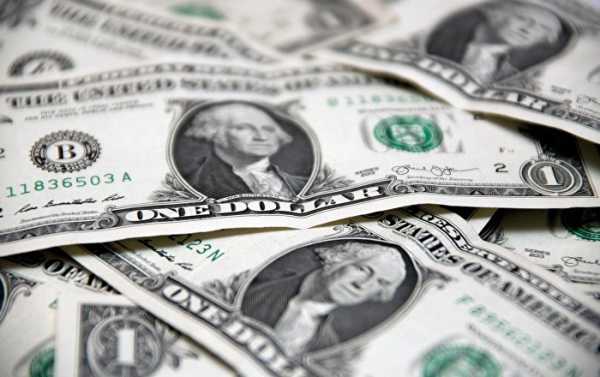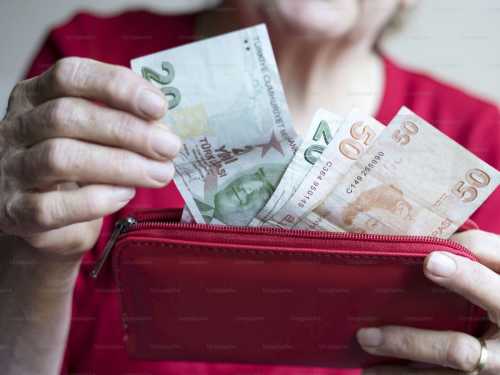
Following Bloomberg’s leak of the EU’s plan to “challenge the dollar’s dominance” the European Commission published a comprehensive roadmap of how to boost the euro’s role in the global economy. Thus, Europe’s “de-dollarisation plan” has coincided with a similar effort put forward by Russia.
On 5 December the European Commission (EC) released a plan “to further strengthen the euro’s global role”.
“In spite of their position as large buyers as well as major producers, European businesses still trade in US dollar in key strategic markets, often even between themselves. This exposes businesses to currency risks and political risks, such as unilateral decisions that directly affect dollar denominated transactions,” the EC stated calling upon member states “to promote the wider use of the euro in strategic sectors”, including the oil and gas sector, raw materials, agri-food commodities, and the transport-manufacturing sector.
According to the press-release, the euro remains the “second most important international currency” with “some 340 million European citizens us[ing] euro banknotes and coins every day across the euro area’s 19 member states”.
It highlighted that the European bloc currency represents about 20 percent of international reserves of foreign central banks, adding that about 36 percent of the value of international transactions had been settled in euros in 2017. For comparison’s sake, dollar international reserves amount to 60 percent.
A separate memo related to the EC press release specified that “in the wake of the economic and financial crisis, Europe has taken determined action to increasingly make the euro a source of economic protection and empowerment”.
It pointed out that the decision to boost the EU currency had not been taken overnight: “Strengthening the international role of the euro is both the logical continuation of and a new step in this overall agenda developed over the past four years”, the memo underscored.
‘Bitter Fruits’ of Trump’s Unilateral Sanctions Policy
Although the documents assert that the plan to give a boost to the euro has been considered for quite a while, The Financial Times presumed that the “unilateral decisions” remark is a clear reference to US President Donald Trump’s decision to withdraw from the Joint Comprehensive Plan of Action (JCPOA) and resume sanctions against the Islamic Republic of Iran.
It is not the first time that EU businesses have been challenged by Washington’s sanctions. Earlier this year, the Trump administration introduced restrictions against Russian businessman Oleg Deripaska and his aluminium-to-energy group En+ and Rusal. It was the problems of the US’s European partners that forced the American side to make concessions and postpone sanctions against Deripaska’s aluminium giants.
Meanwhile, Washington’s threats to impose sanctions on Russia’s energy industry under the 2017 Countering America’s Adversaries Through Sanctions Act (CAATSA) are triggering further concerns among European states. Berlin is continuing to pave the way for the Russian-European Nord Stream 2 endeavour despite the Trump administration’s ire. For its part, Paris is not interested in the imposition of restrictions against Novatek’s Yamal LNG, since France’s energy giant Total has a 20 percent share in the project.
Trump’s assertive foreign policy has prompted the European leadership to come up with a plan of creating an alternative to the Society for Worldwide Interbank Financial Telecommunication (SWIFT) in order to circumvent US sanctions.
Thus, on 25 September, High Representative of the European Union for Foreign Affairs and Security Policy Federica Mogherini unveiled a so-called “special purpose vehicle” (SPV) to “assist and reassure economic operators pursuing legitimate business with Iran”, adding that the remaining signatories to the JCPOA — France, Britain, Germany, Russia, and China — had supported the initiative.
In the same vein, the newly released document puts an emphasis on the necessity to promote “an integrated instant payment system in the EU” and provide “technical assistance” to international players “to improve access to the euro payment system by foreign entities”.
Pricing Oil and Gas in Euros
The EC decision to switch to the euro in energy trade represents a milestone in the development of the EU’s financial system.
Europe still remains the largest importer of oil and gas with an external energy bill amounting to 300 billion euros ($314 billion) a year on average. However, until recently, 80-90 percent of EU energy contracts have been settled in dollars.
A document, entitled “Commission recommendation on the international role of the euro in the field of energy”, highlights that “annual traded volumes on European energy markets exceed 40 trillion euros” and bemoans the fact that “over 90 percent of the aggregated transactions related to oil, gas and other energy commodities are executed in currencies other than the euro”.
The shift to the euro-denominated energy transactions could pose a significant challenge to the dollar, potentially depriving it of its “exorbitant privilege”.
As a result of the strengthening of the euro’s role in the field of energy trade, “European businesses will enjoy stronger autonomy, allowing them to pay or receive payments for their international trade, and finance themselves with reduced exposure to legal actions taken by third country jurisdictions.”
In addition, the documents envisage “completing Europe’s Economic and Monetary Union, Banking Union and Capital Markets Union”, “increasing the share of euro denominated debt issued by European entities” and “fostering economic diplomacy to promote the use of the euro” abroad.
‘We are Not the Only Ones Doing It’
Although the EC released its documents only on 5 December, Bloomberg broke the EU initiative to boost the euro two days earlier. In an article entitled “Here’s How Europe Plans to Challenge the Dollar’s Dominance” the media outlet warned that “while the proposals aren’t binding legislation, their potential adoption by the bloc could upend the global energy market”.
The EU initiative to “de-dollarise” the bloc’s economy coincided with a strikingly similar plan pushed ahead by Moscow. In mid-September Andrey Kostin, the president and chairman of VTB Bank’s management board, outlined a four-part grand design to reduce Russia’s dependence on the greenback. The plan was largely endorsed by the Russian Ministry of Finance. Although the final version of the Russian de-dollarisation plan has yet to be unveiled, it is already underway.
“[The US is] shooting itself not in the foot, but a bit higher”, Russian President Vladimir Putin said the annual ‘Russia Calling!’ Investment Forum on 28 November. “The instability in dollar settlements causes a desire for many world economies to find alternative reserve currencies and create dollar-independent settlement systems… We’re not the only ones doing it, believe me”.
Sourse: sputniknews.com






